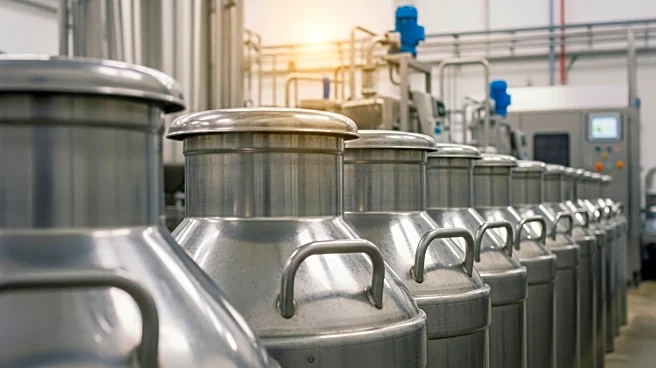What's Happening?
The U.S. cattle market is experiencing significant volatility as producers navigate a complex environment marked by historically low cattle inventory and external pressures. Eric Ralph, a risk management adviser at CommStock Investments, highlighted these dynamics at Husker Harvest Days. Despite record-high prices, the market is showing signs of correction, with 'rounded tops' in feeder and live cattle prices indicating potential instability. Contributing factors include border closures with Mexico since November 2024 and a 76% tariff on Brazilian beef imports, which have exacerbated price fluctuations. However, low feed costs and strong fundamentals continue to support profitability, with feeder cattle prices remaining high and cost of gain under 85 cents per pound.
Why It's Important?
The volatility in the cattle market has significant implications for U.S. agriculture and the broader economy. Producers face challenges in maintaining profitability amid fluctuating prices and external pressures. The historically low cattle inventory suggests a slow rebuilding process, impacting supply and potentially leading to sustained high prices. This environment necessitates effective risk management strategies, such as futures hedging and Livestock Risk Protection insurance, to safeguard against market uncertainties. The situation underscores the need for strategic planning and adaptation in the agricultural sector, affecting stakeholders from farmers to consumers.
What's Next?
Looking ahead, Ralph anticipates continued choppy trading through spring 2025, with potential new price highs before establishing a 'new normal' at elevated levels. Producers are advised to focus on risk management and plan for varying market conditions. The rebuilding of the cattle herd is expected to be gradual, with no return to previous inventory levels, suggesting long-term adjustments in market dynamics. Stakeholders will need to monitor policy changes, such as tariffs and border regulations, which could further influence market conditions.
Beyond the Headlines
The current market situation may lead to broader shifts in agricultural practices and economic strategies. The emphasis on risk management and strategic planning could drive innovation in financial products and insurance offerings tailored to the agricultural sector. Additionally, the slow rebuilding of the cattle herd may prompt discussions on sustainable farming practices and resource management, influencing long-term industry trends.










